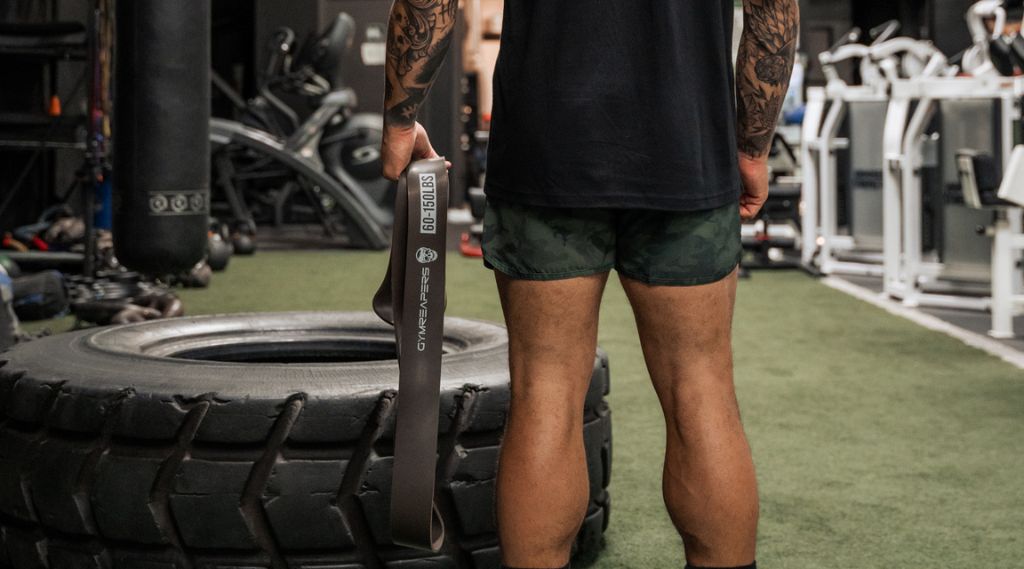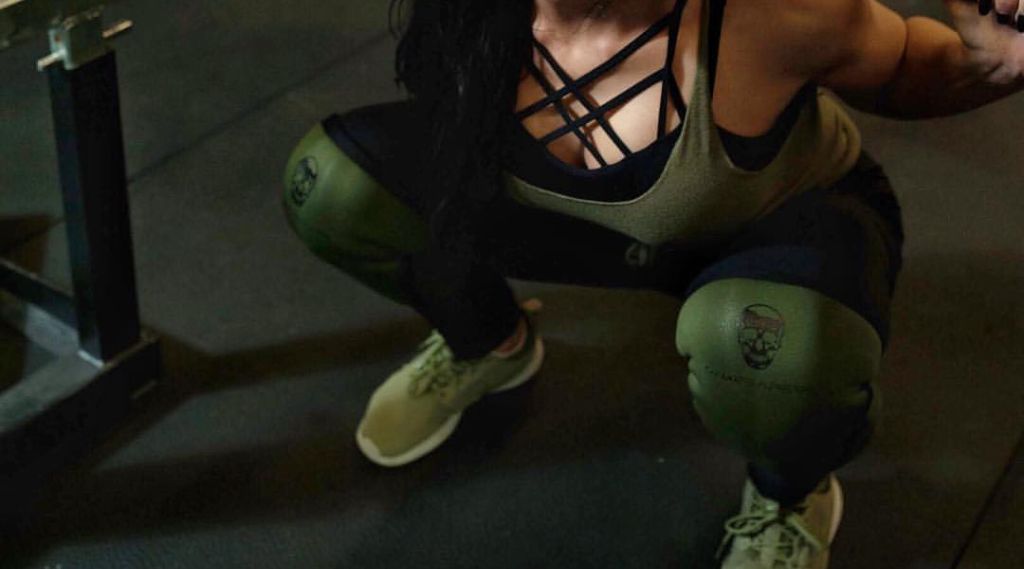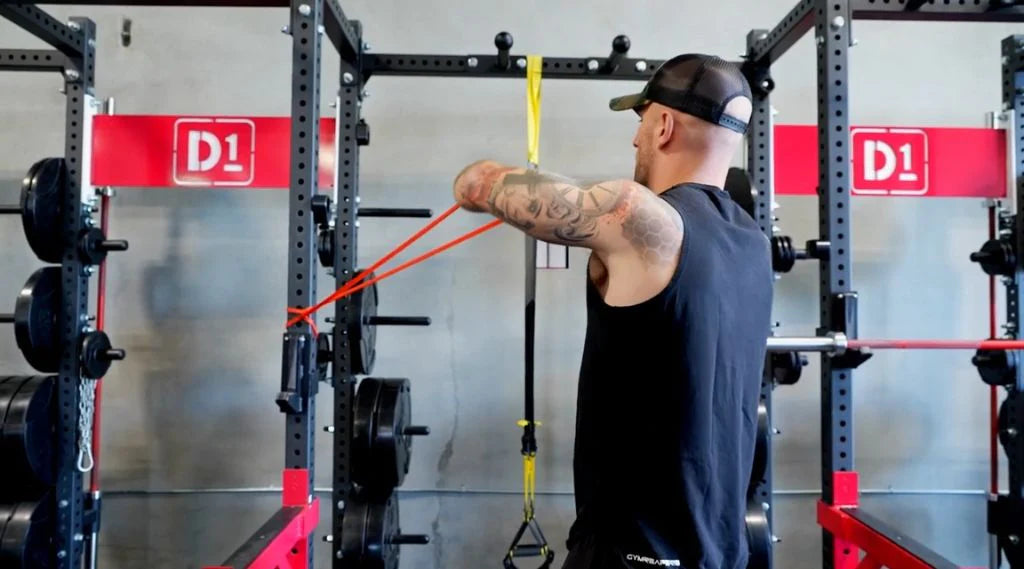If you’ve mastered the inverted row and are looking for a way to progress it, then you need to start incorporating banded inverted rows.
Banded inverted rows involve the standard row exercise, but with your body weight and a resistance band adding to the challenge. The band increases the intensity, encouraging greater strength over time, allowing you to progress the inverted row in more ways than by simply adding more reps or total sets.
To help you get the most out of this exercise, I’ll provide a detailed step-by-step guide on how to perform it, identify common mistakes and their solutions, and give advice on incorporating banded inverted rows into your workout routine.
Muscles Worked With Inverted Rows

Banded inverted rows work the following muscle groups:
Latissimus Dorsi (Lats)
The latissimus dorsi, or lats, are the primary muscles engaged during inverted rows. They are large muscles in your back that give it its V shape. Inverted rows require pulling a load (your body) horizontally, a movement that heavily engages these muscles.
Rhomboids
Rhomboids are located in your upper back, between your shoulder blades. They play a vital role in retracting the scapula (pulling your shoulder blades together), which is a primary movement in inverted rows.
Trapezius
The trapezius, or traps, is a large muscle that extends down the back of the neck and upper spine. It aids in the pulling motion during inverted rows.
Biceps Brachii
The biceps are the muscles on the front of your upper arm. While the biceps are not the primary muscle group worked, they play a significant role in the pulling motion by bending your forearms toward your upper arm at the elbow.
Erector Spinae
These are a group of muscles running along your spine. They maintain the straightness and curvature of the spine, providing stability during the inverted row to keep your body in a plank-like position.
Deltoids
The deltoids, or delts, are the rounded muscles over the top and sides of the shoulders. The posterior deltoids are engaged during the rowing motion.
Related Articles:
How To Do Inverted Rows With Bands: Step-By-Step Guide
While the inverted row is pretty straightforward and could probably be imitated just by seeing it done (it’s just an upside-down push-up after all, right?), it’s worth going through the steps to make sure you’re doing it right.
Step 1: Set Up Your Band
Select an appropriate resistance band and securely anchor it so it will stretch across your chest from side to side. Ensure it is tightly fastened to a sturdy post or object on the floor on either side of you. Make sure the band doesn’t get in the way of your arms performing the row.
Step 2: Lay Under the Bar
Lay on the floor with a barbell secured about 2-3 feet above the ground, so that your arms can fully extend without your back hitting the floor. Take a shoulder-width grip on the bar.
Step 3: Pull Yourself Up
Pull your chest towards the band by bending your elbows and squeezing your shoulder blades together. Ensure your body moves as a unit, remaining in a plank-like position. As you pull toward the bar, the band across your chest will increase in tension, making it harder than if you were only pulling your body weight.
Step 4: Lower Back Down
Slowly extend your arms and lower your body back to the starting position. Maintain control to ensure a smooth motion.
Step 5: Repeat For Reps
Repeat this motion for as many reps as the set calls for, or until you are unable to maintain good form with each rep.
Remember, the key to an effective banded inverted row is form and control, not speed.
Common Banded Inverted Row Mistakes
Understanding and avoiding common mistakes can significantly improve the effectiveness of the banded row.
Here are some common mistakes that I see people make with banded inverted rows:
Mistake #1: Choosing The Wrong Band
Using a band that's too strong can limit your range of motion and reduce muscle activation, while a band that's too weak may not provide enough resistance, making the band useless.
Fix: Select The Right Band

Choose a band that allows you to perform the inverted row with a full range of motion (arms straight to chest touching the bar) and proper form.
As a rule of thumb, if you can't complete at least 8 reps with good form, the band is probably too strong. If you can easily do more than 15, then the band might be too weak.
Mistake #2: Incorrect Form
The mistake I see most often is lifters performing the inverted row with terrible form. This involves letting the shoulders hunch forward as you pull, letting the lower back arch, or leaving the hips behind.
All of these incorrect techniques increase your risk of injury and decrease the effectiveness of the exercise.
Fix: Maintain Proper Form
Keep your body straight and your core engaged throughout the movement so that your body moves as a unit. Pull your shoulder blades back and down as you row so that your shoulder blades are pinched together at the top of the movement when your chest touches the bar.
Mistake #3: Limiting Range of Motion
Not using the full range of motion can prevent you from getting the full benefits of the exercise because if you don’t complete the entire rep then you don’t build strength in every portion of the lift and you don’t activate your muscles to their fullest extent.
Fix: Full Range of Motion
Ensure you pull yourself up until your chest touches or almost touches the bar and lower yourself until your arms are fully extended. Make sure the barbell is set high enough that you can fully extend your arms without letting your back touch the floor.
Mistake #4: Performing the Exercise Too Quickly
Performing the exercise too quickly causes you to use momentum, rather than the target muscles to complete the repetition, which reduces the effectiveness of the exercise because your muscles are no longer doing the work.
Fix: Control Your Movements
Perform the exercise in a controlled manner, focusing on muscle contraction and relaxation. If you struggle to slow down, then try implementing a tempo by counting to 3 on the way up, pausing with your chest touching the bar for a second, then counting to 3 again as you lower.
Implementing Banded Inverted Rows Into Your Training Routine

Including banded inverted rows in your workout routine can significantly enhance your upper body strength. Here's how to incorporate them into your program:
Sets and Reps
Start with 3 sets of 8-16 reps. As your strength improves, you can increase your number of sets (up to 5 sets) and increase the number of reps you can do within the rep range. The last few reps should be challenging, but not so difficult that your form breaks down.
Load
Start with a band that allows you to perform the exercise with good form for 8-16 reps, and gradually increase the resistance as you get stronger so that you can keep your sets in the 8-16 rep range.
For example, if you can do 10 reps with a light resistance band, then work until you can do 16 reps with the light resistance band. Once you’ve mastered that, increase to a medium resistance band and try for at least 8 reps.
You can also add tempos and pauses to make them more challenging if you’re not ready to progress to the next resistance band, like pausing with the bar on your chest for a second or two or making your descent last for 5-8 seconds as you fight the pull of the band.
Frequency
For best results, muscles should be trained twice a week for 6-8 sets over the course of the week. You can include banded rows into your upper body or dedicated back days 1-2x a week to help hit that frequency target.
Exercise Order
Inverted rows are typically performed after compound exercises like squats or deadlifts. You can also do them towards the end of your workout as a burnout exercise. Whatever your training split, these should be treated as an accessory exercise to support your compound lifts, which means they come later in your workout.
Best Bands For Inverted Rows

Choosing the right resistance band can enhance the effectiveness of your inverted rows, and ensure you have a great tool in your gym bag for years to come.
My top recommendation is GymReapers’ Resistance Bands because they come in different resistances, allowing you to progress as you get stronger. The bands are durable and made from natural latex, ensuring consistent resistance and reliable longevity.
Using high-quality bands like those offered by GymReapers can help you get stronger and build more muscle.











Hinterlasse einen Kommentar
Alle Kommentare werden vor der Veröffentlichung geprüft.
Diese Website ist durch hCaptcha geschützt und es gelten die allgemeinen Geschäftsbedingungen und Datenschutzbestimmungen von hCaptcha.